Here’s the thing. An average app loses 77% of its daily active users (DAU) within the first three days after install—the average user retention rate after 30 days drops to 5.6%.
On the other hand, app users who interact with an app weekly have a 90% likelihood of becoming long-term users.
No surprise, many argue retention is one of the most critical metrics while analyzing the results of a mobile app experience.
Let’s be honest—if your users make using your app a habit, you’re the winner (and you keep some fat money rolls💰in your pocket).
The big question is, what’s the path to get there?
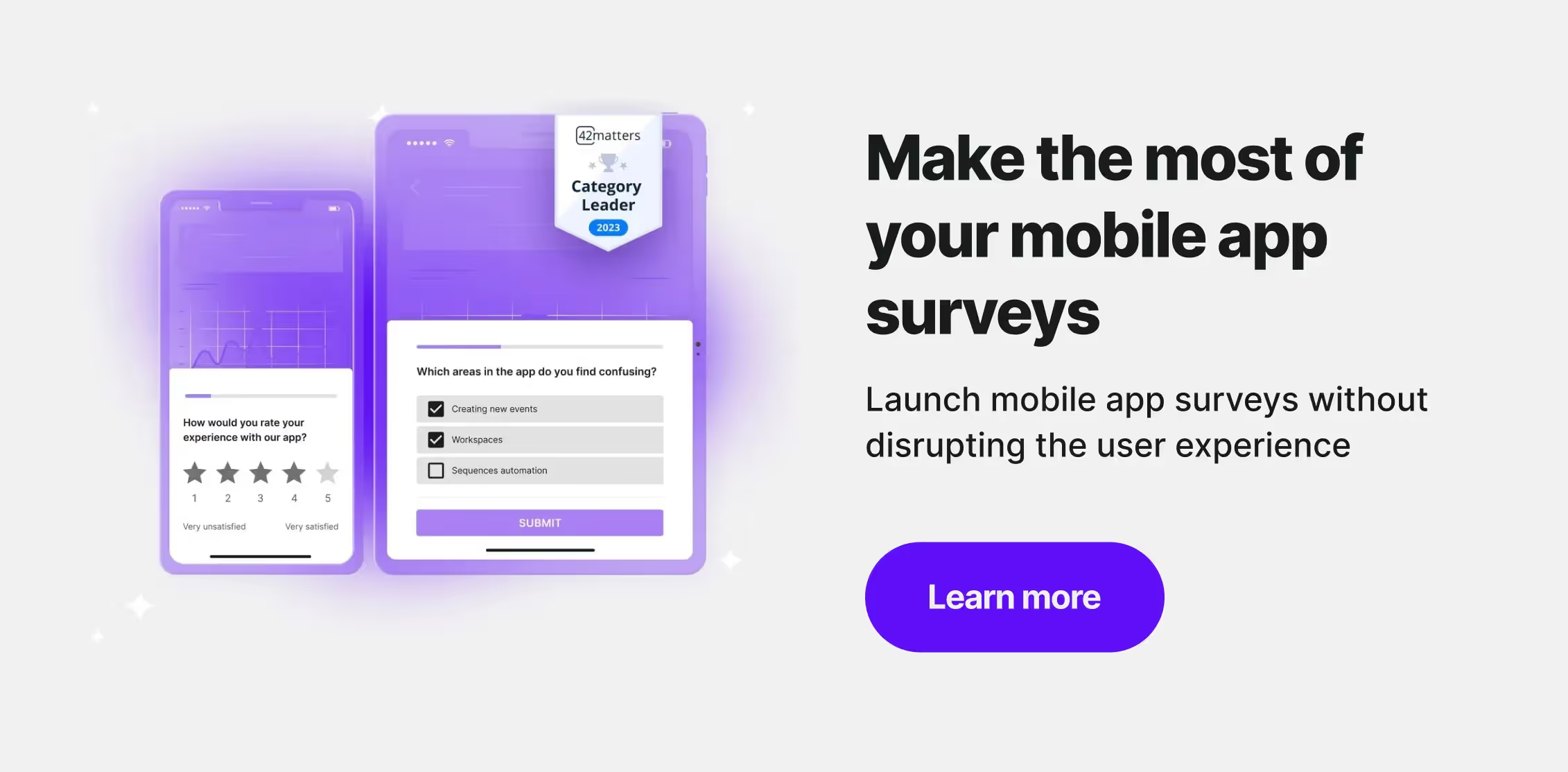
What is user retention?
User retention is a metric that shows how many app users you can keep active over time. In other words, it’s the inverse of user churn. Strategically, user retention is crucial for assessing a mobile application's long-term success and sustainability.
Analyzing user retention for your mobile app shows how effective and, ultimately, user-friendly your mobile app is. And if you struggle with keeping your users engaged and active, there’s something in the product or experience that doesn’t convince them to use it. Discover the ‘why’ behind it, which may just be the recipe for that lovable, sticky app. 🍚
Why is user retention important?
Keeping users around in our app isn't only about the initial download and a quick look inside. It's much more than that; it’s about crafting an engaging, smooth, and beneficial user experience that makes them want to stay. The longer they engage with our app, the more opportunities we create for them to take valuable actions, like making purchases.
It saves money…
Having thousands of daily downloads is great, but keeping a steady user base gives you a steady revenue stream and can help you grow. It’s also cheaper. The acquisition cost of a new user can be even four to five times greater than retaining your existing users. Moreover, over the last five years, customer acquisition costs (CAC) have risen by 60%.
So, on one hand, it’s fundamental to have the acquisition tap turned on, but on the other, you need to make sure those users don’t leak.
…and enhances user Lifetime Value (LTV)
User retention helps your mobile app grow sustainably. It significantly impacts the users’ Lifetime Value (LTV) as they actively engage for a longer time, and you can potentially generate more revenue from them. So, as long as the user regularly gets back to your app, the CAC goes down, and your LTV increases. It’s a win-win-win situation. 🏆
Free publicity
Satisfied and retained users are more likely to recommend the app to others, bolstering organic growth through word-of-mouth marketing, which can enhance user acquisition for exactly zero additional dollars.
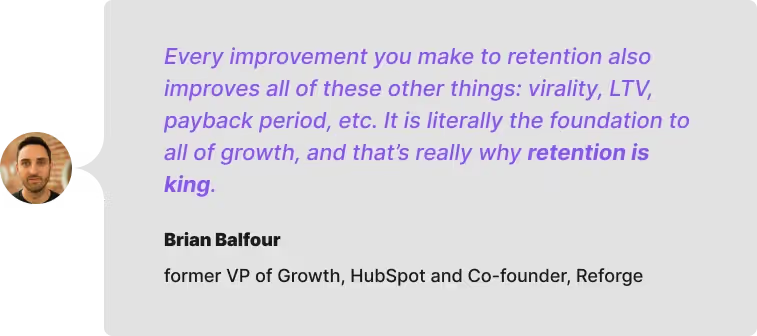
How to calculate the mobile app retention rate
You can calculate the mobile app retention rate by comparing the number of app users at two different points in time. The most common method involves dividing the number of active users at the end of a set period by the total number of active users at the start of that period, and multiplying by 100 to get a percentage.
The formula looks like this:

Now, what’s fundamental is to define the starting point correctly. Usually, most of the sources understand “day 1” as the day after install or the day after the app was first opened.
To analyze short-term and long-term user retention, you can measure this metric at various intervals, such as 1, 7, 14, or 30 days. It all depends on the flow of your app—there also might be other critical days in the user journey.
What is a good user retention rate?
That’s a tricky one. You might find sources that give you the magic number or at least the range, but the truth is, there’s no one answer (to rule them all). Or maybe there is—‘it depends.’
If you really need to compare, look for benchmarks in companies from the same industry, of a similar size, and with a go-to-market strategy that matches yours.
The average user retention rate after 30 days for mobile apps is around 5.6%. It varies greatly—from over 11% for the news sector to only 2.4% for games.
So, what can you do to make it better?
The mobile app retention strategy (to rule them all)
Make data-driven decisions. To improve mobile app user retention, track specific data points that will give you insights into user behavior, engagement, and satisfaction. There are multiple options of what data you should focus on, but remember—it boils down to metrics crucial for your product.
I won’t leave you with this cliffhanger, though. There are some, of course, some all-timers to consider.
- Active Users
Keep tabs on Daily and Monthly Active Users (DAU and MAU) to assess the regular engagement levels within the app. - Churn Rate
Monitor how many users stop using the app over a specified period, aiming to identify and address the reasons for churn. - User Engagement
Track which features are most/least used and the average session duration to understand what keeps users engaged. - In-app Messages Effectiveness
Gauge the impact of in-app messages on user engagement and retention, optimizing them for better performance. - Customer Satisfaction
Employ CSAT surveys or Net Promoter Score (NPS) to comprehend user satisfaction and improvement areas. - Feature Adoption
Analyze the adoption rate of new or idle features to enhance app utility and stickiness. - Retention Curves
Analyzing retention curves can provide insights into when and why users drop off, allowing targeted intervention strategies.
There are a whole more metrics that could work for you. If you’d like to dive deeper into this topic, check out our comprehensive article on measuring app performance. Now, let’s get back on track.
Top 12 mobile app retention strategies
Let's start with a plot twist before we delve into some tips and tricks. Brace yourselves ⚔️, here it goes.
When boosting your user retention, you don’t really work on the retention itself. You work around it.
To effectively raise the user retention bars, you actually focus on the main areas of your customer journey: activation ▶️, engagement 🎢, and resurrection 🧟. Taking care of these elements may visibly improve your user retention metric.
▶️ Increase app retention with user activation
Reduce the onboarding friction
The critical moment of any onboarding flow is asking your user to sign up after downloading the app. Unless necessary, you can consider moving this step to the end of the user journey, giving them a good taste of what’s in it before they commit.
Make a good first impression fast
Your app's onboarding process is like a first date. It's your chance to make a positive impression, show off your best features, and ensure the user has made the right choice. A well-designed onboarding nudges users gently into understanding how to navigate and utilize your app, potentially leading them to become long-term users.
- Reduce time to value
Through onboarding, you can highlight your app's core benefits and functionalities. If users quickly understand what makes your app unique and how it can add value to their lives, they’re more likely to stick around. Clearly explain the main features and let users try them out—it can alleviate confusion and help to underline the app’s value. - Make it easy
Onboarding should simplify the user's journey, providing a straightforward and intuitive pathway from installation to regular usage. By offering clear instructions, tips, and guidance with well-designed in-app messaging, users can quickly become familiar and comfortable with the app, and that encourages repeat use. - Set them up for success with your app
Effective onboarding sets users up for a successful app experience by helping them configure settings, preferences, and profiles from the get-go. You want your users to begin their journey through the app with a blast, increasing the likelihood that they will continue to find value in it. - Encourage key actions
Gently nudging new users to take key actions that will enhance their experience or provide immediate value can solidify their relationship with the app. Being there for your users when they’re making a first purchase, completing a profile, or achieving a milestone with tooltips, blinkers, or other helpful pop-ups can build commitment and investment in the app.
Personalize user experience
To personalize well, start with data you already have, like demographics or usage patterns. Don’t stop there, though. Ask your users about their goals with the app, what interests them, or anything specific that will help you to customize their experience.
Engaging users with personalized content and experiences right from the start can make them feel valued and understood. Utilizing data to tailor unique onboarding flows can forge a connection and increase relevance, driving continued use.
Let a helping hand
Some of the users may need an extra hand at the beginning. Ensuring they know how to access help and support provides reassurance and can improve their confidence in using the app. A clear and accessible support pathway within the onboarding experience might mean users who encounter early issues are more likely to seek help than uninstall the app.
Heads up 🚨
Don’t forget a smooth user support experience is paramount at all stages of the customer journey, no matter the stage. Over 70% of customers understand good customer support experience as responding fast to their problems, so make sure your team resolves tickets at blazing speed.
Ask them
The most effortless way to improve your onboarding experience is to ask. You can use a ready-to-go Survicate template and trigger it at a carefully chosen moment of the user onboarding process, asking the vital question ⤵️
🎢 Increase app retention with user engagement
Design seamless in-app message flows
In-app messages or notifications are messages that app users receive while active within the application. They can take various formats, such as banners, pop-ups, or interstitials, and communicate information, prompts, or offers directly to users during their app usage session.
Thoughtfully designed in-app messages can enhance the user experience by providing useful tips, updates, or offers relevant to the user’s in-app behavior, thereby making the app more user-friendly and valuable to them.
In-app messages are the best place to gather contextual feedback. With Survicate mobile surveys, you can pinpoint the exact moment of triggering the survey, choosing between showing it on a specific screen or after the user takes a particular action. This way, you can effortlessly collect insights for improvement and make users feel heard and valued, positively impacting retention.
But there’s more to it. ⤵️
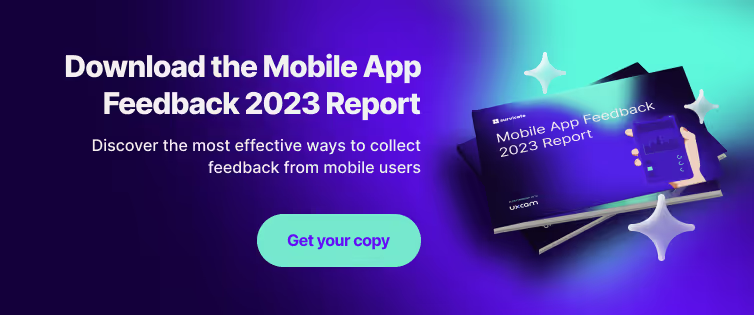
Gather user feedback with mobile app surveys
User feedback is one of the best tools to add stickiness to your app and improve retention. Just think about it—by collecting user feedback, you learn what people think about your product first-hand.
By getting to know your users’ pain points, you can proactively address the areas of dissatisfaction. It doesn’t only boost retention but also prevents potential user churn.
When you use the feedback to optimize your app's user experience—implement features or changes that users want—you directly respond to their needs and wishes by closing the feedback loop.
Through strategically implemented mobile app surveys, you can gather crucial information to refine the user experience, proactively address issues, and align app functionalities with user expectations, significantly boosting user retention. To top it up, mobile surveys make the process of collecting user feedback more effective (by 8%!), as our 2023 Mobile App Feedback Report shows.
With Survicate, you can build a user feedback machine that continuously gathers insights from various touchpoints and stages in the user journey.
The best survey types to improve mobile app retention
User Satisfaction (CSAT) Survey
Utilize CSAT surveys where users rate their satisfaction with your app on a linear scale. It’ll give you straightforward information about your users' satisfaction with the app.
Net Promoter Score (NPS) Survey
The battle-tested NPS question “Would you recommend our product to your friend?” is a classic way to measure customer satisfaction over time. Implementing an NPS survey will give you a snapshot of customer loyalty and satisfaction and a solid base to measure trend lines for those elements.
User Experience (UX) Survey
Implement UX surveys that focus on the app's usability and design aspects to ensure that the user interface and experience are intuitive and user-friendly.
User Effort Score (UES) Survey
Implement UES surveys to measure the ease of interaction with the app and identify any friction points in the user journey.
Exit and Churn Survey
Integrate surveys that trigger when users uninstall the app or after they’ve had a negative experience to understand the reasons behind their dissatisfaction or departure.
Strategic use of push notifications
Push notifications are messages that app users receive directly to their mobile device when they don’t use the app. They appear as alert messages or banners and can serve various purposes, such as enhancing user engagement, promoting offers, or prompting users to take specific actions.
The broad reach and real-time delivery are what’s really great about push notifications. You can also enrich them with user data for personalization and target it to various user groups.
At first glance, it seems to be a perfect tool to boost engagement, but there are some catches:
- Before you can send push notifications to your users, they have to grant access to receive them, and they can opt-out whenever they want.
- Opting in seems crucial for maintaining high mobile app retention—almost 50% of users will use the app 11 times or more if they opt in for push notifications.
- There might be some delivery limitations. Depending on the mobile device, your notifications may look slightly different or not display some content.
Don’t overwhelm the user
Balance is everything here. How many times have you disabled push notifications because an app bombarded you when you needed to focus? If you want to avoid annoyance and, in severe cases—uninstalls, strategically plan the frequency while prioritizing messages that genuinely give value to your users.
Fit into the right time and context
Aligning push notifications with user behavior and sending them at opportune moments increases their effectiveness. Ensuring that the timing of the messages considers global time zones, user’s active hours, and situational context maximizes engagement without being disruptive.
Personalize notifications
Make sure to tailor the messages the way they’re relevant and valuable to each user. Use their names, reference to past behaviors, or generally include user-specific data that enhances connection and engagement.
Gamify the user experience
Who doesn’t like to play a game now and then? The thrill of the win, the sense of urgency, excelling oneself, and FUN are some tasty ingredients to spice up your app’s engagement.
Applying the gamification strategies can pay off in the time users spend on the app. They can also enhance social interactions with challenges, sharing, or collaboration.
With a simple reward mechanism based on giving points or a virtual currency for achieving the app’s milestones or regular usage, you actively motivate your users to return. On the same note, badges for completing tasks offer users a sense of accomplishment, driving them to pursue more in-app challenges, a.k.a.—more time spent inside the app. Remember: we all like to be winners 🏆.
Reward for loyalty
Loyalty programs integrated into mobile apps can help in boosting user retention. They encourage users to frequently engage with the app by offering personalized and relevant rewards and incentives. This way, you can foster prolonged user activity and commitment. With each interaction, users get accustomed to the app's features and develop a sense of attachment due to the rewards they accrue. Over time, this leads to increased brand loyalty, turning occasional users into dedicated ones.
Integrating mobile apps into loyalty programs directly correlates with enhanced customer engagement and deepens brand loyalty. If you offer a seamless mobile experience coupled with loyalty benefits, you build a strong connection with users. Additionally, users tend to perceive higher value in apps that provide consistent rewards or exclusive benefits and are less likely to abandon the platform. This strategy ensures that users stay engaged and position your brand as customer-centric in the eyes of your user base.
Heads up 🚨
You can also use loyalty programs as a trigger to re-engage users who may have become inactive by offering them special deals or reminders about unclaimed rewards.
🧟Increase app retention with user resurrection
If churning is a part of the “natural mobile app user cycle,” why even bother about reactivating dormant users? Well, they installed the app for a reason, in the end. And as long as it’s on their mobile, you can try to turn the table.
Prevention is better than cure
But before we venture to resurrect your mobile app users, let’s step back—to the moment they started disengaging with the app. It’s critical to distinguish different stages of disengagement, as it can end up with churn.
If you notice a steadily decreasing number of sessions in a specific user group, you can be proactive and ask the right question when you still can get answers. You could use this Survicate template to understand low engagement.
Fix your app
You already know you need to gather data and insights on the “why” behind user disengagement. With this knowledge, you can prioritize app fixes that will prevent future user leakage. Be it foul user experience, battery drainage, or slow load times—fix it before you try to resurrect your dormant users.
There’s nothing worse than thoughtless spirit summoning. 👻 We’ve all seen enough Halloween horror movies to be aware of that. You must give your dormant users a solid value to convince them to return. If they return to the same messy app, you won’t have another chance, as they may churn right away.
Let them know you miss them (and they miss out)
Now, you need to reach those lapsed users outside the mobile app. There are several options, depending on your actions' context and intensity.
Retargeting
Consider waving to your disengaged users in the social media apps with retargeting campaigns. Initially, it may seem a far-fetched idea, but remember—we spend over 2.5 hours daily scrolling posts, stories, and reels. Tossing your app’s promoted content can do the trick if you target a well-segmented audience.
Email offer
Knocking on the door of your users' email box is yet another idea. With an average open rate of over 20%, as Mailchimp reports, an email campaign is a proven way to reach those dormant users. Incentivizing this reach-out with a special offer gives you even higher chances to bring users back and boost your mobile app retention.
Push notifications
The most direct method to contact your lapsed users is push notifications. We’ve already talked about them in the previous section, but there are some things to consider before you start sending them.
- Don’t be pushy
When reaching out to dormant users, you must ensure you’re not blasting them with notifications. - Personalize the context
You need to dig deep into your data and find the best personalized triggers to reach out. For example, you’ve just updated a feature the user complained about. Or maybe a new season challenge is coming up, and you know some users only get active when it’s on—letting your users know about it can effectively bring them back to the app. - Special offers
Yup, you can also use the “offer hook” here. People love getting good value for lower prices, and if you hit the sweet spot with personalizing the offer, it can definitely bring those disengaged users back.
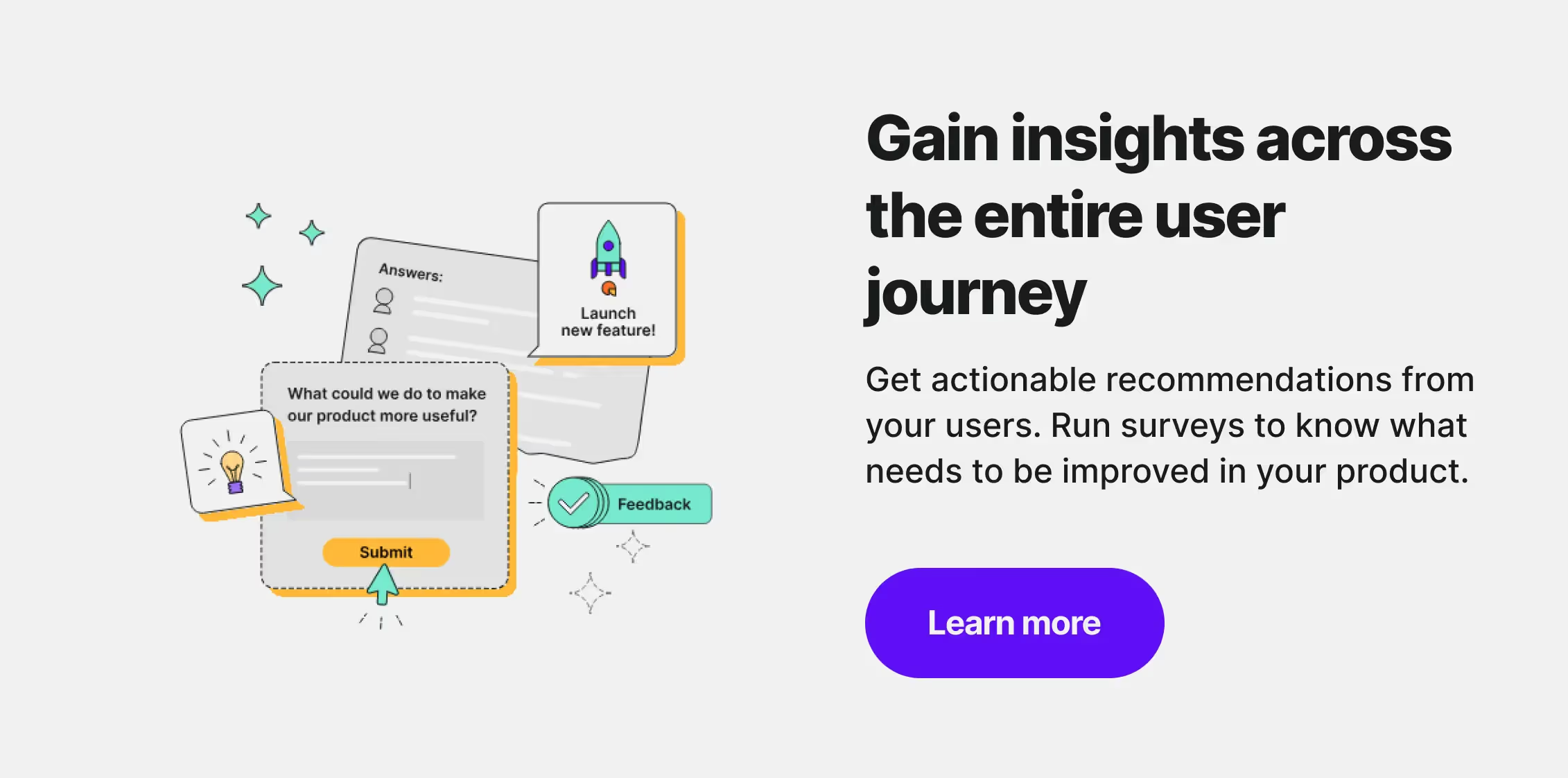
Survicate works across the user journey to improve your mobile app retention
In the fast-evolving world of mobile applications, understanding the user journey’s complexity and ensuring user satisfaction is paramount. Survicate is an apt partner for this quest, operating seamlessly across various stages of the user experience.
From in-app messages that engage and retain to comprehensive surveys like CSAT, NPS, UX, and more that delve deep into user sentiment, Survicate is a tool tailored for collection insights across user journey. As retention becomes the new conversion, it's not just about the initial attraction but ensuring sustained user engagement.
With Survicate, not only can you gain actionable insights, but you can also foster a community where users feel valued, understood, and heard.
Try our 10-day trial to see Survicate in action, and check all the Best Plan features for free!









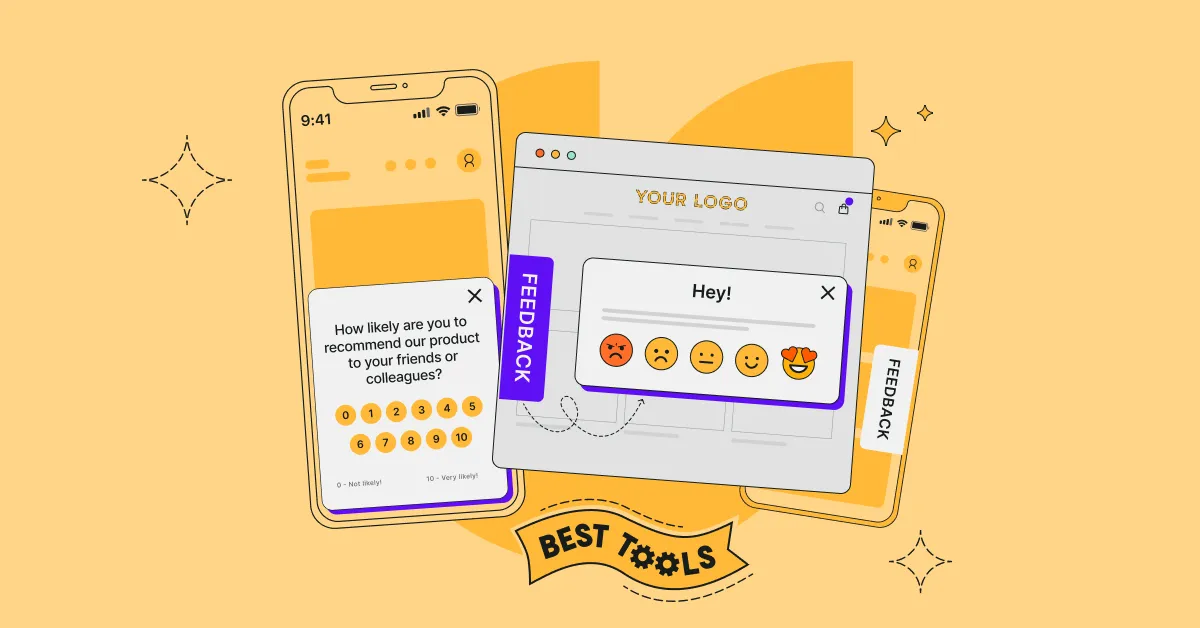
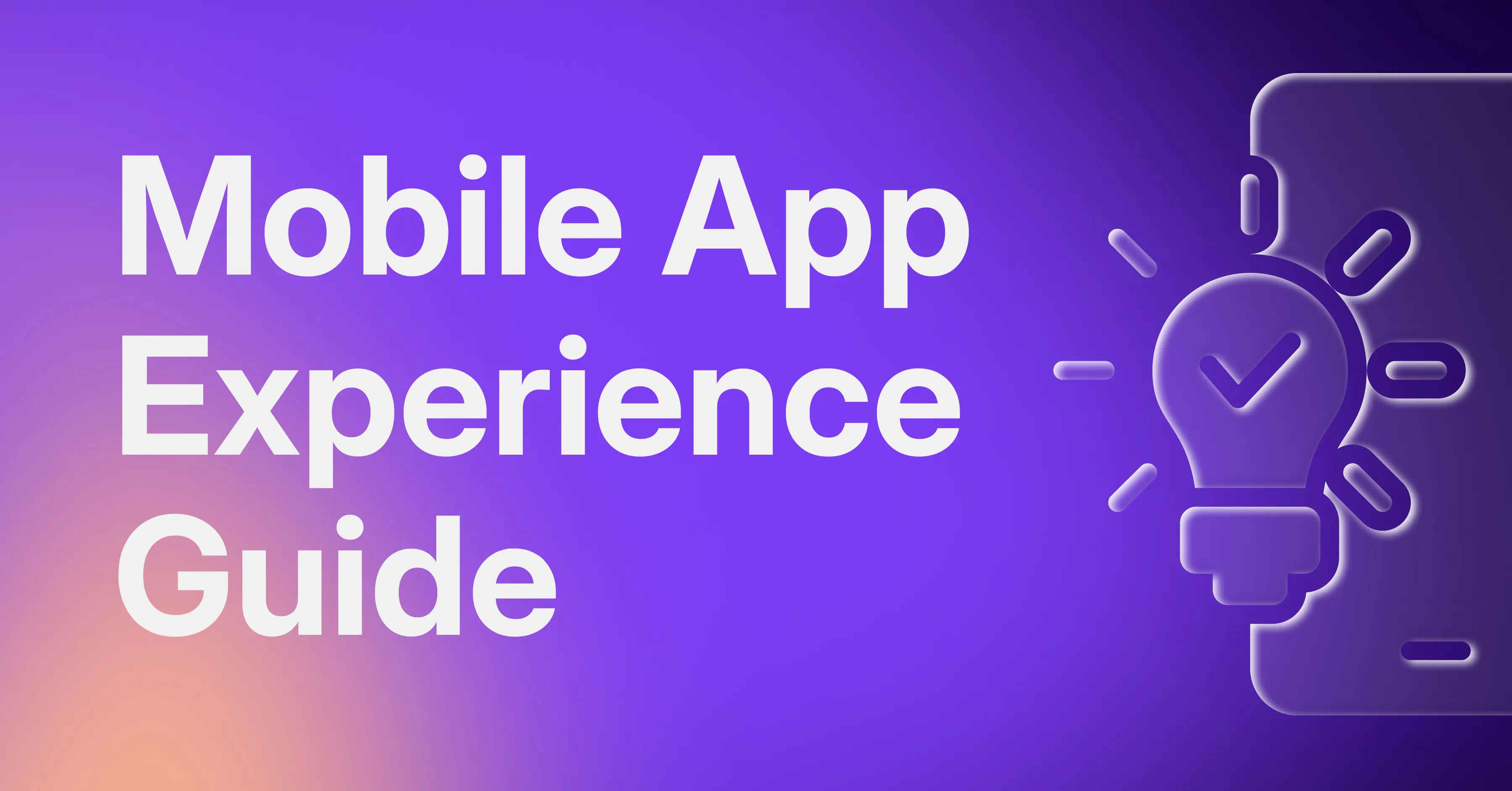
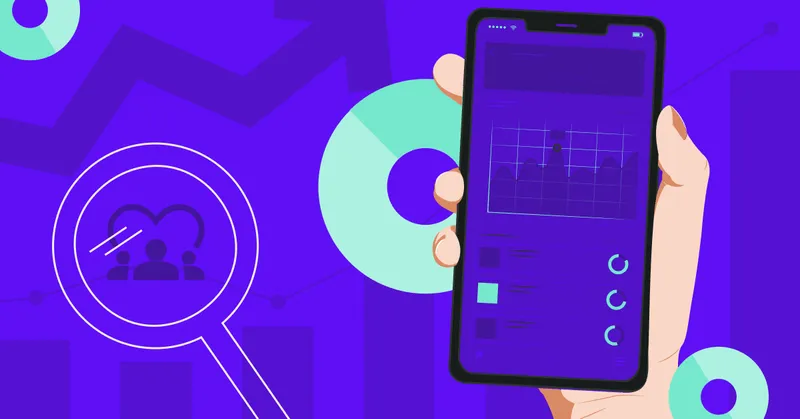
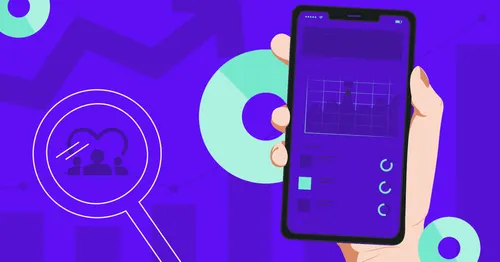

.svg)

.svg)



